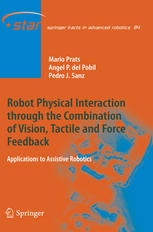

Most ebook files are in PDF format, so you can easily read them using various software such as Foxit Reader or directly on the Google Chrome browser.
Some ebook files are released by publishers in other formats such as .awz, .mobi, .epub, .fb2, etc. You may need to install specific software to read these formats on mobile/PC, such as Calibre.
Please read the tutorial at this link: https://ebookbell.com/faq
We offer FREE conversion to the popular formats you request; however, this may take some time. Therefore, right after payment, please email us, and we will try to provide the service as quickly as possible.
For some exceptional file formats or broken links (if any), please refrain from opening any disputes. Instead, email us first, and we will try to assist within a maximum of 6 hours.
EbookBell Team

4.1
70 reviewsRobot manipulation is a great challenge; it encompasses versatility -adaptation to different situations-, autonomy -independent robot operation-, and dependability -for success under modeling or sensing errors. A complete manipulation task involves, first, a suitable grasp or contact configuration, and the subsequent motion required by the task. This monograph presents a unified framework by introducing task-related aspects into the knowledge-based grasp concept, leading to task-oriented grasps.
Similarly, grasp-related issues are also considered during the execution of a task, leading to grasp-oriented tasks which is called framework for physical interaction (FPI). The book presents the theoretical framework for the versatile specification of physical interaction tasks, as well as the problem of autonomous planning of these tasks. A further focus is on sensor-based dependable execution combining three different types of sensors: force, vision and tactile.
The FPI approach allows to perform a wide range of robot manipulation tasks. All contributions are validated with several experiments using different real robots placed on household environments; for instance, a high-DoF humanoid robot can successfully operate unmodeled mechanisms with widely varying structure in a general way with natural motions.
This research was recipient of the European Georges Giralt Award and the Robotdalen Scientific Award Honorary Mention.